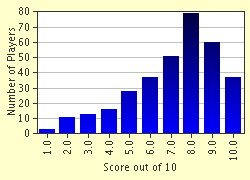Quiz Answer Key and Fun Facts
1. When would you be likely to see the following instruction: s1, k1, psso, k5?
2. The textured pattern created by slipping one or more stitches to a small needle, working one or more stitches from the main needle, then working the stitch(es) from the small needle is called
3. The complexly-patterned sweaters, usually knit in undyed wool and based on traditional North Atlantic fishermen's wear, are called
4. When my husband wanted an adult-sized sweater using the Paddington Bear design from a child's pattern, I was able to make the design an appropriate size by
5. With an even number of stitches, your first row of work is *k1, p1* repeat to end. Which of the following second rows would produce ribbing?
6. When might you want to use four needles instead of the usual two?
7. How do left-handed knitters need to adapt patterns to achieve the desired result?
8. Why might you insert the following row in a piece of work: k2, *k2tog, yo, k2* repeat to end?
9. Which of the following yarns would be most suitable for a pair of baby booties?
10. What effect does the instruction ktbl (knit through back of loop) have?
Source: Author
looney_tunes
This quiz was reviewed by FunTrivia editor
Leau before going online.
Any errors found in FunTrivia content are routinely corrected through our feedback system.

